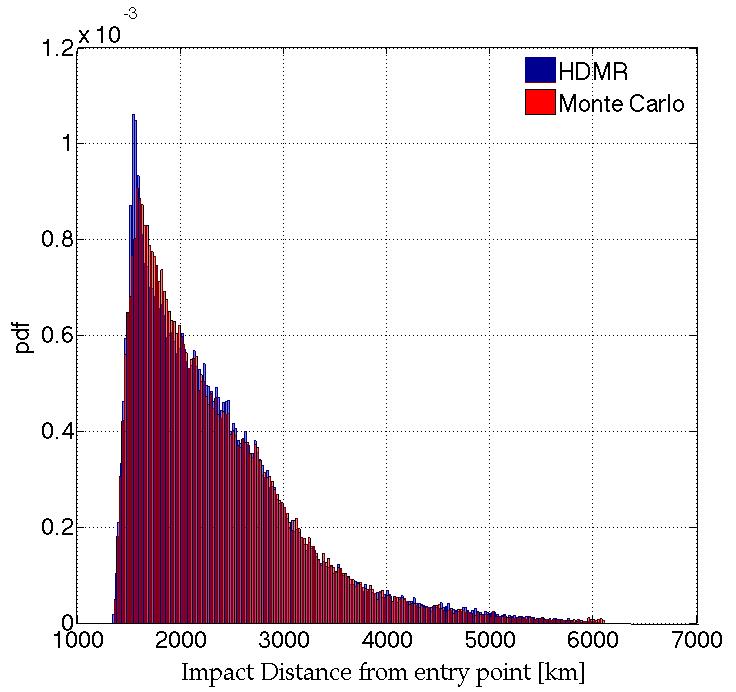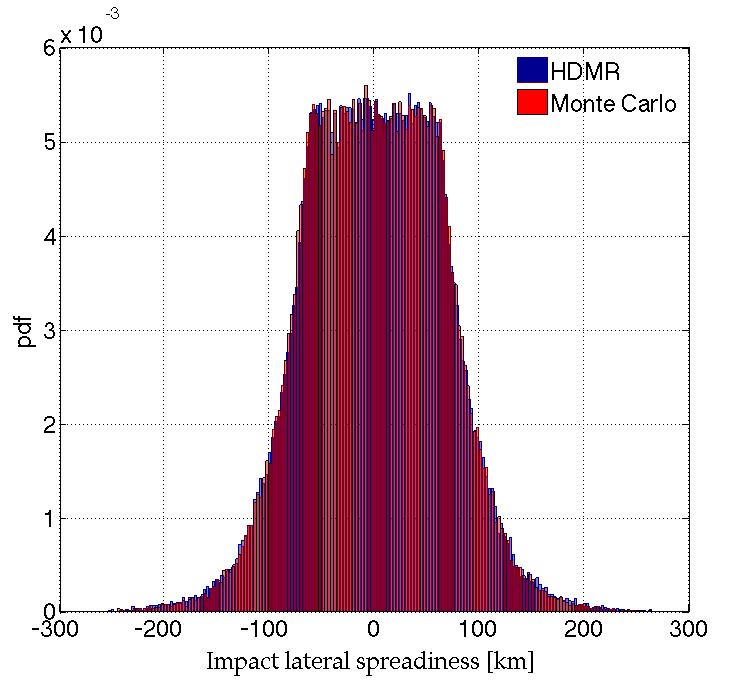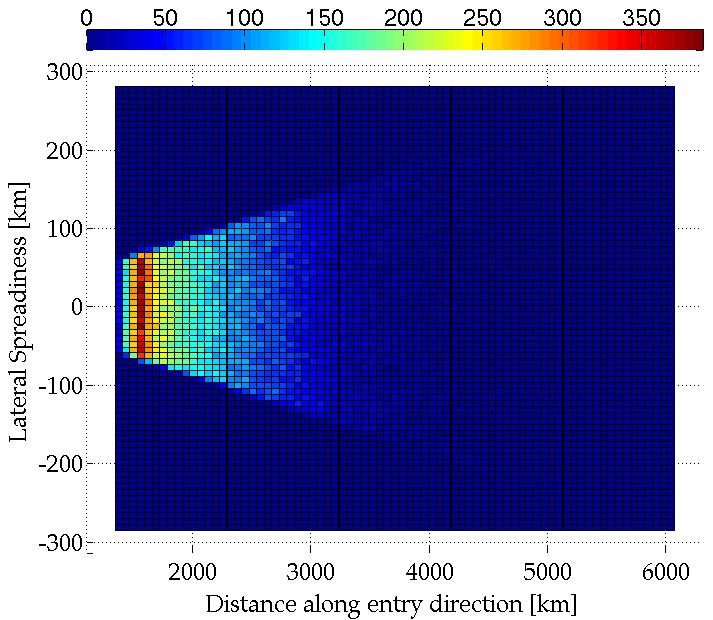Research Topic: Modeling and Simulation of atmospheric (re)-entry of asteroids and debris under uncertainties
The primary goal is the development of a Free Open Source Tool for Re-entry of Asteroids and Space Debris (FOSTRAD). Existing tools perform the re-entry simulations in a deterministic sense and do not perform any uncertainty treatment. FOSTRAD is work is progress towards implementing uncertainty treatment into the re-entry modeling and simulation. FOSTRAD will also incorporate improved aero- and aero-thermodynamic models improved accuracies from the simulation. The output of such a tool will provide probabilistic distributions for mass and location of surviving pieces of a re-entry event.
Main Results
Preliminary studies for incorporating uncertainty into the re-entry simulations are limited to aerodynamic trajectory simulation. Results for the effect of uncertain parameters on trajectory simulation of a simple spherical object are derived. Uncertainty quantification and propagation is performed using a novel uncertainty quantification approach based on a new derivation of the high dimensional model representation (HDMR) method, developed recently at the University of Strathcylde. Both aleatoric and epistemic uncertainties are considered in this work. Uncertain atmospheric parameters considered include density, temperature, com- position, and free-stream air heat capacity. Uncertain model parameters considered include object flight path angle, object speed, object mass, and direction angle. Drag is the only aerodynamic force considered in the planar re-entry problem. Results indicate that for initial conditions corresponding to re-entry from a circular orbit, the probabilistic distributions for the impact location are far from the typically used Gaussian or ellipsoids. Also, the HDMR approach reduces the computational cost over a Monte Carlo by more than 2 orders of magnitude.


 Select References:
Select References:[1] M. Kubicek, E. Minisci, and M. Cisternino, “High dimensional sensitivity analysis using surrogate mod- eling and High Dimensional Model Representation,” International Journal for Uncertainty Quantifica- tion, 2015. accepted.
[2] P. M. Mehta, E. Minisci, M. Vasile, et al., “An Open Source Hypersonic Aerodynamic and Aerothermo- dynamic Modeling Tool,” Proceeding of the 8th European Symposium on Aerothermodynamics of Space Vehicles, Lisbon, Portugal, March 2015.
[3] P. M. Mehta, E. Minisci, M. Vasile, et al., “Sensitivity Analysis towards Probabilistic Re-Entry Modeling of Spacecraft and Space Debris,” Proceeding of the AIAA Modeling and Simulation Technologies Conference, Dallas, TX, June 2015. AIAA 2015-3098.